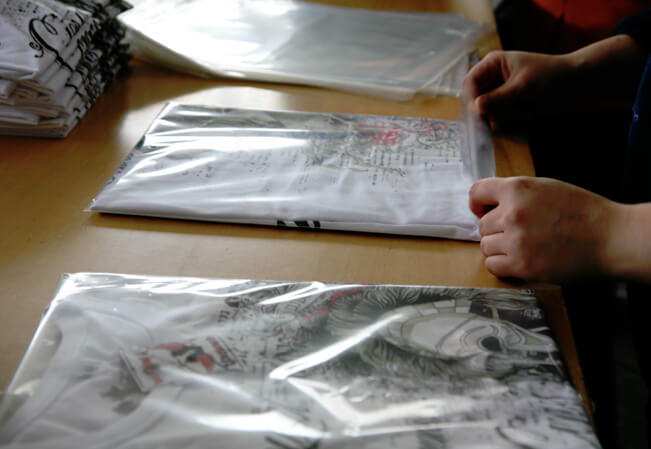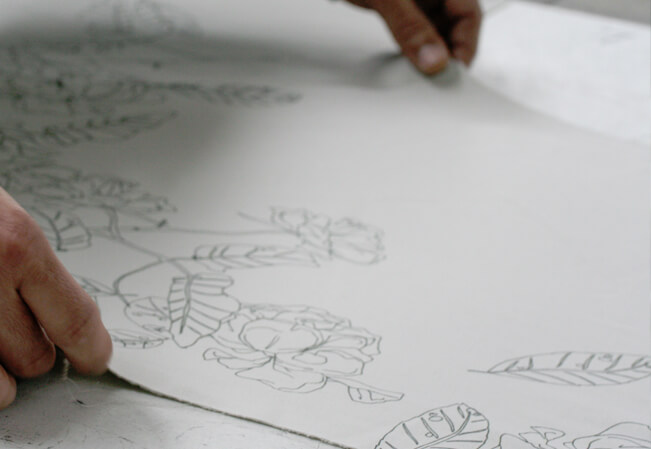Bran Serigrafic: textile screen printing company specialized in printing for art and fashion
What is screen printing? classified within the graphic arts is a handcrafted activity. Screen printing is an image reproduction technique that consists of printing on a support by passing ink through a technical fabric mounted on aluminum or wooden frames that constitute the printing mold .
Screen printing can be applied on different supports (glass, ceramic, plastic, etc.) At Bran Serigrafic we have specialized for almost 40 years in textile screen printing. Screen printing is a very appropriate technique for making and reproducing works of art and we are not exaggerating if we say that it can become an art in itself. Screen printing is a craft profession acquired fundamentally through experience and specialization. That is, it has a knowledge base unlike digital printing that requires little knowledge
Dou want to know more? Delve into our universe.
Screen printing on textile process: printing
At this time, we take care of the color separation and filming of the photoliths. We decompose the image that can have millions of colors in only a few colors that when printed on the textile support to reproduce the complete image
It is necessary to take into account various variables such as the characteristics of the fabric on which it will be printed (type of fabric, thickness, composition), the layer and type of ink to be used, the linearity and inclination angles of the screens, the type of rackets and molds to use etc…
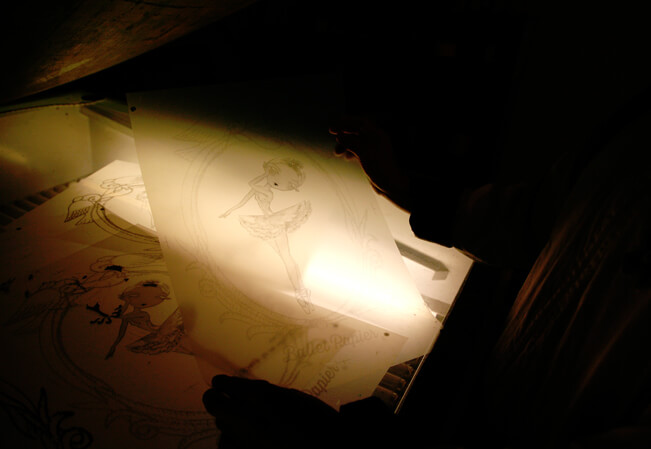
Screen printing in textile process: mold preparation
Screen making is a complex and expensive process. To achieve a good final result, it is essential that the printing screens are correctly made, according to the many variables that need to be taken into account, especially regarding the screen fabric, its tension, emulsion, exposure, etc …
Colors
It is necessary to make a mold for each color.
Materials
Wood or aluminum impression molds of different sizes and fabrics are required
The phases of the screen printing process
We apply the screen mesh to the mold, we degreased and emulsified (spread and emulsion on both sides of screen) , Then molds are then dried
Once we proceed to emulsify it with a photosensitive material, applying the photolyte with the image by contact and exposing it to light in the insolator. The light hardens the image-free emulsified area and the part not exposed to light is diluted by contact with water, leaving areas free of emulsion through which ink can pass.
The screens are taped, blocking and retouching the areas where there are open emulsion points so that the ink comes out only and exclusively through the printing areas.
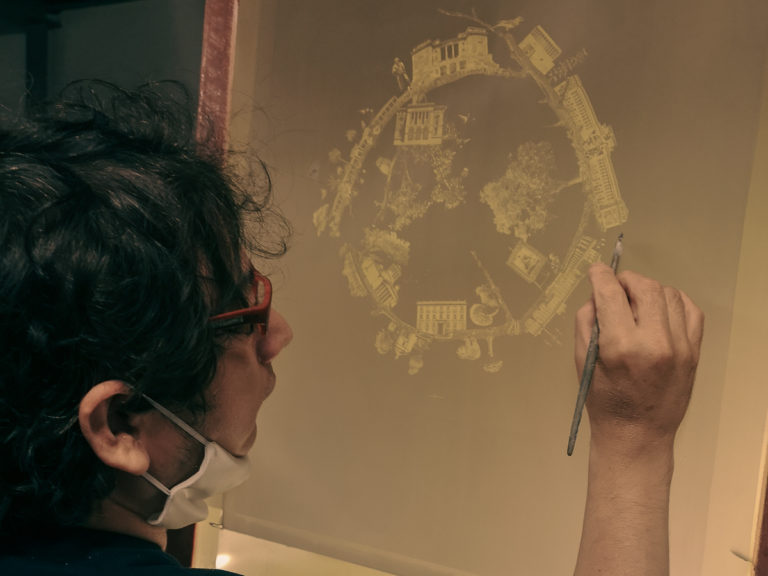
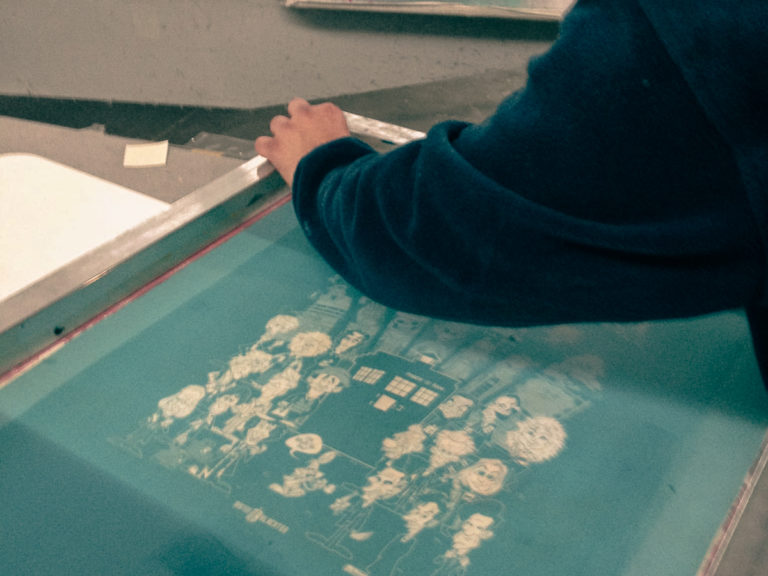
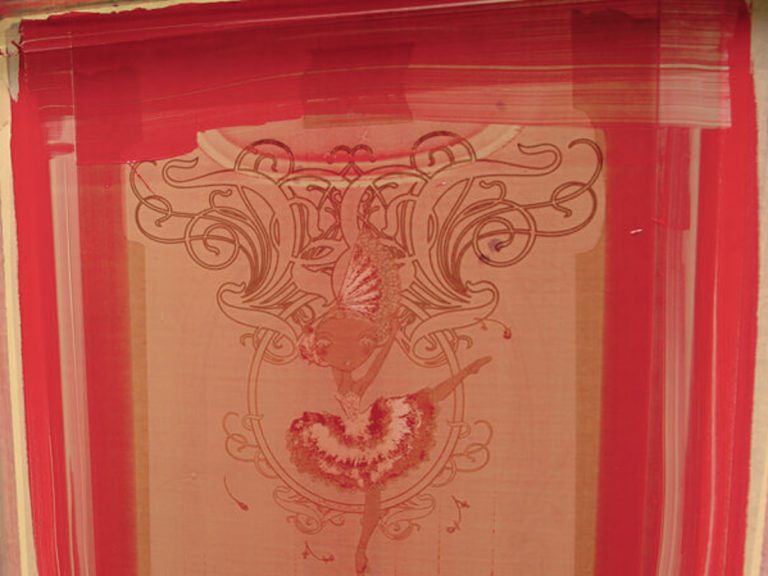
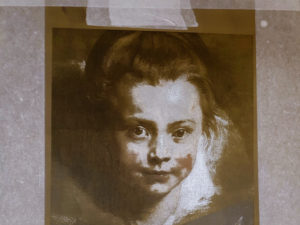
Screen printing on textiles, process: preparation of colors
In the ink room we prepare and adjust the tone, color intensity, viscosity, touch, opacity, etc … The colors are prepared using pantone and there are very different types of inks (it is necessary to know in depth).
We adjust the tonality en masse once the color is printed and we carry out a check of color strength and contrasts and corrections
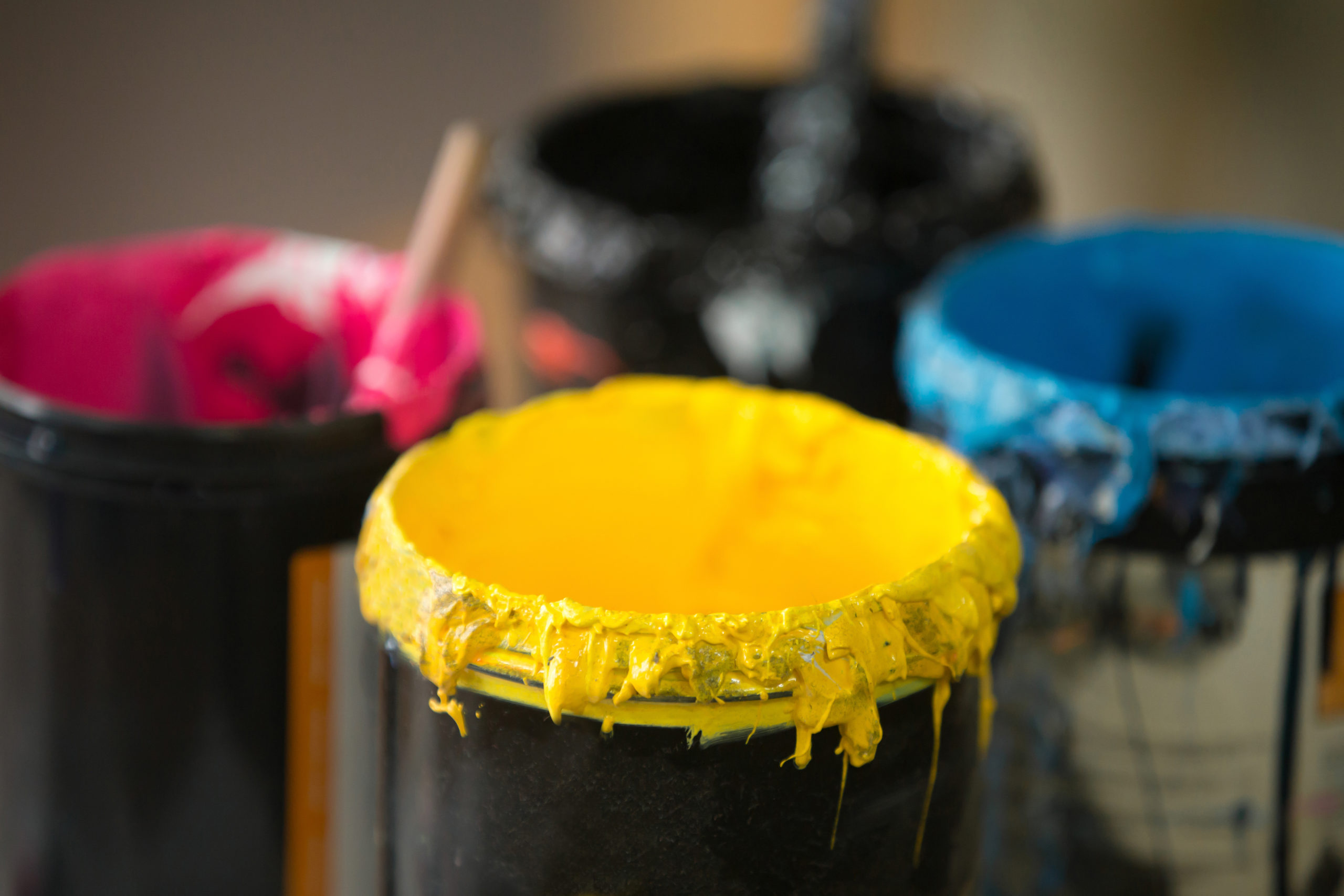
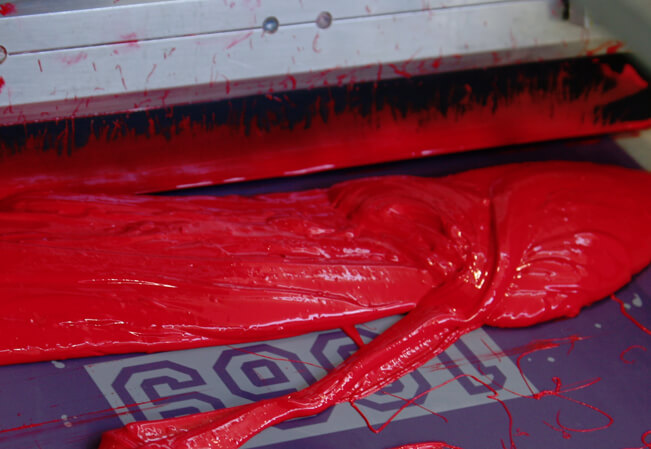
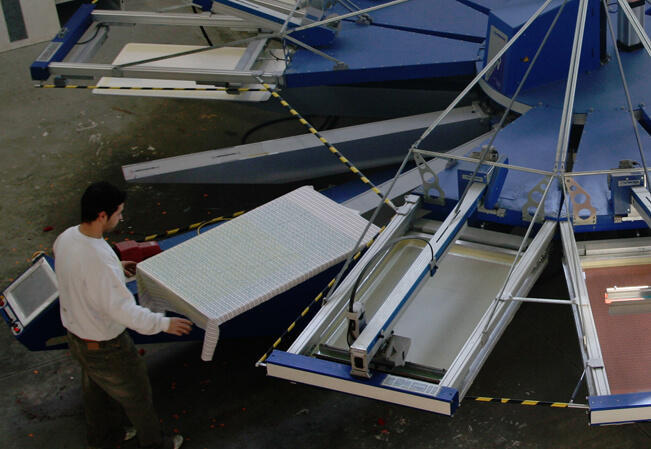
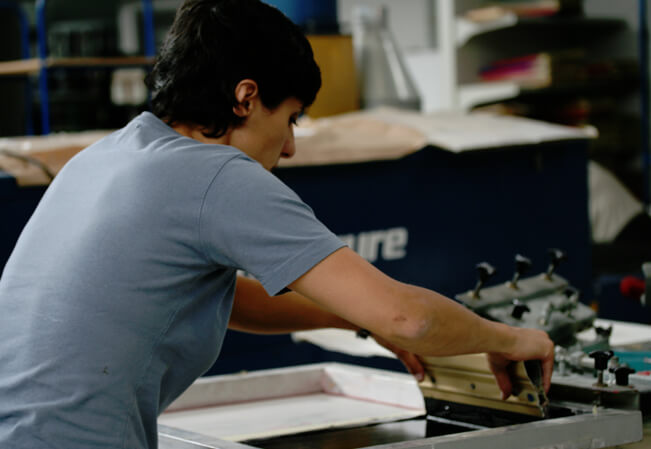
Screen printing on textiles, process: adjustment and assembly in screen printer
The screens are mounted on metal arms supported on a rotating shaft that hold them and allow the screen to rotate and be raised and lowered on the printing table.
We carry out the corresponding adjustments of blades angles and pressures, then ink is loaded and we prepare to carry out the necessary tests until we achieve the definition, texture, touch, covering power and all the characteristics of the standard we want or the sample we have.
Screen printing on textiles, process: printing
The printing will be done with the screens. Ink is pushed through the voids free of emulsion by dragging the inks manually with a rubber scraper or with the help of a machine that has a mechanical arm that moves and pushes the squeegee to ink the design onto the shirt.
The ink is deposited on the fabric. If the printing formats are very large, it is very difficult to do it manually because it is not possible to maintain the same level of pressure in the entire printing area, so it is necessary to use a machine that fulfills this function of dragging the doctor blade without this detracting from the artisan character of the final product
